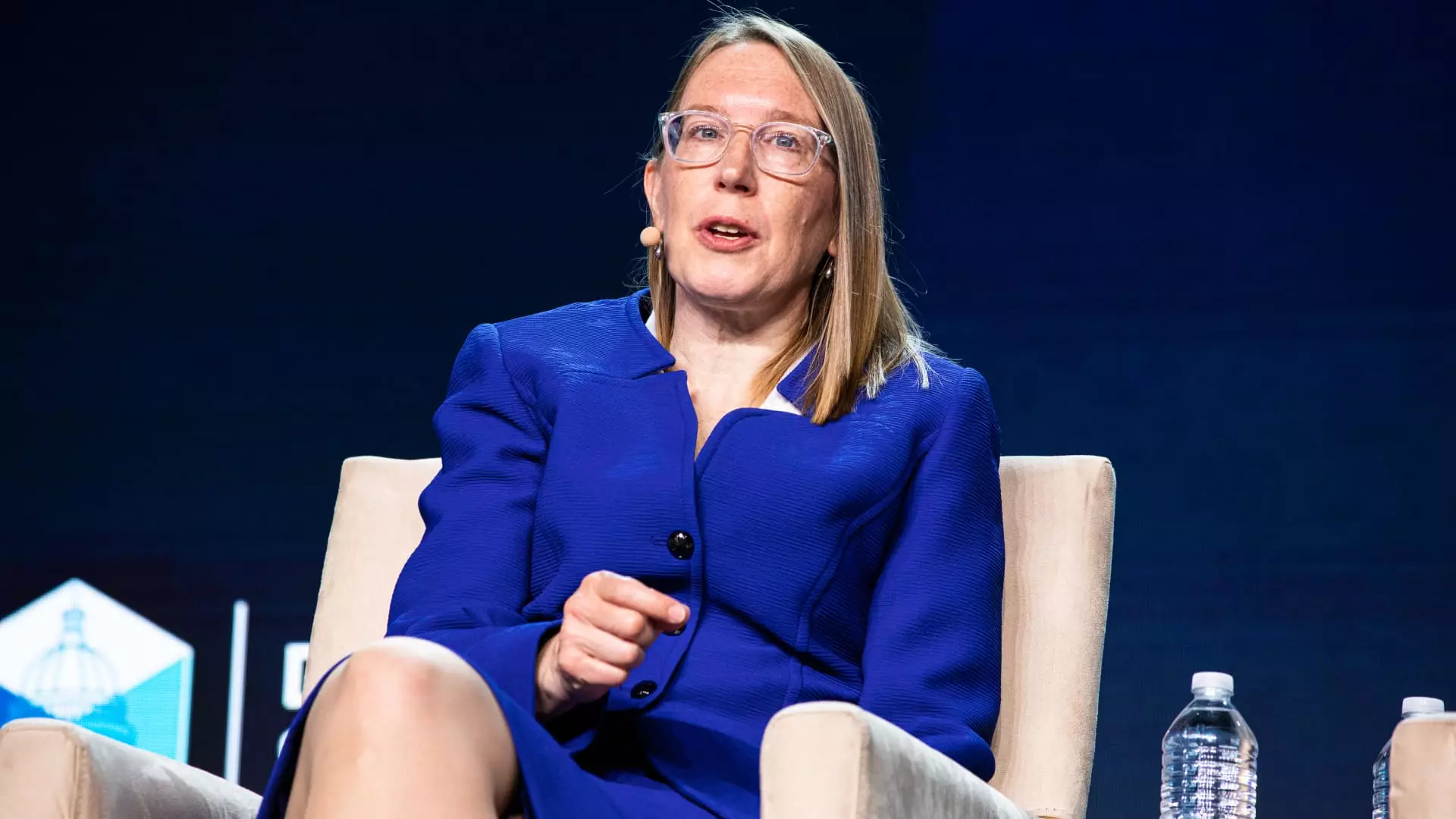In the aftermath of recent developments in the cryptocurrency world, it is evident that regulatory bodies are taking a step back, allowing the notorious meme coins to thrive unchecked. The U.S. Securities and Exchange Commission (SEC) has signaled a significant shift in its stance toward these tokens, popularized through their viral nature and cultural impact. One of the key takeaways from this shift is the agency’s decision to classify most meme coins, including the much-publicized $TRUMP coin, as non-securities. This development has significant implications for the crypto market, specifically in terms of investor protection and market dynamics.
Hester Peirce, a seasoned commissioner of the SEC, expressed concerns about the agency’s failure to provide clarity regarding its regulatory reach in the meme coin arena. Her comments underscore a critical gap where investors, primarily motivated by hype and virality, might find themselves without the safety nets generally associated with traditional investments. This raises alarm bells for me; in a landscape filled with speculation, the absence of regulatory guidance places ordinary investors at a significant disadvantage.
The Political Undertones of Crypto Regulation
What is perhaps most alarming about this trend is the intertwining of politics and cryptocurrency. As President Trump unveiled his meme coin, $TRUMP, the SEC’s non-interventionist approach raises questions about conflicts of interest. The fact that 80% of the token is controlled by the Trump Organization signals that the cryptocurrency boom might be more about personal gain than genuine innovation.
The tumultuous interplay between Trump’s political fortunes and his crypto endeavors also invites scrutiny. Lawmakers, particularly from the Democratic Party, have voiced their concerns regarding the implications of this financial entanglement. Given that Trump’s political lineage may influence regulatory decisions, it creates a murky environment where the lines between governance, regulation, and personal profit are dangerously blurred. The idea that foreign entities may exploit this situation for their own benefit presents a risk to not only financial markets but democratic integrity itself.
Meme Coins as Financial Mavericks
The rise of meme coins like $TRUMP elucidates a critical feature of contemporary investing: popularity can overshadow intrinsic value. The $TRUMP token surged to an astonishing market cap of $15 billion shortly after its launch, primarily fueled by promotional efforts rather than any substantial economic foundation. As these coins gain traction, my concern is that they appeal to a demographic of investors who are primarily thrill-seekers rather than informed participants in the financial landscape.
Peirce emphasizes that investors should act with caution. Her statement, urging the public not to expect protection from the SEC in the realm of meme coins, illuminates the pressing need for investors to conduct due diligence. Unlike traditional securities, these tokens often lack fundamental value, making them highly volatile. The drastic shifts in market capitalization following initial hype — as evidenced by $TRUMP losing most of its value shortly after its launch — serve as a cautionary tale.
Market Manipulation and Backdoor Deals
It is not just the consumer at risk — the broader implications concerning market manipulation loom large. Binance’s recent legal saga, culminating in its lawsuit dismissal, reflects a wider narrative of regulatory leniency that raises eyebrows. With founder Changpeng Zhao’s connections to Trump-affiliated networks and subsequent financial maneuvers, such as receiving significant capital inflows from an Emirati fund, one cannot help but wonder about the integrity of the market. This convergence of crypto actors and political allies hints at a high-stakes game where rules can be bent and favored access granted.
Peirce’s insistence that the SEC’s retreat is not politically motivated does little to reassure those speculating that powerful figures may leverage their influence for advantageous outcomes. Her assertion that existing regulations may not sufficiently address the evolving cryptocurrency landscape further illustrates the chaos that pervades this burgeoning sector. The crypto market thrives on innovation but is coupled with a constant threat of exploitation and manipulation, which seems to favor the financially privileged over the average investor.
Charting a Forward Path: The Need for Innovation in Regulation
As the crypto landscape evolves with its myriad opportunities, there lies a pressing need for regulatory frameworks that are both adaptive and robust. Peirce’s acknowledgment of the gaps in existing regulations invites the discussion of healthier oversight. There is vast potential in integrating traditional finance principles with innovative blockchain technologies, yet the current path looks riddled with uncertainties.
The decision to rescind controversial directives, like Staff Accounting Bulletin 121, sheds light on the urgent necessity to create an environment conducive to responsible participation in the crypto market. Though the malleability of regulations can stimulate growth, vigilance must prevail to ensure that the focus remains on protecting the investor.
In this rapidly changing environment, it is essential for stakeholders, including investors, regulators, and industry leaders, to strive for a balance that fosters innovation while safeguarding market integrity. The financial world is at a critical juncture, and how we navigate this turmoil will determine the trajectory of cryptocurrency in the years to come.

